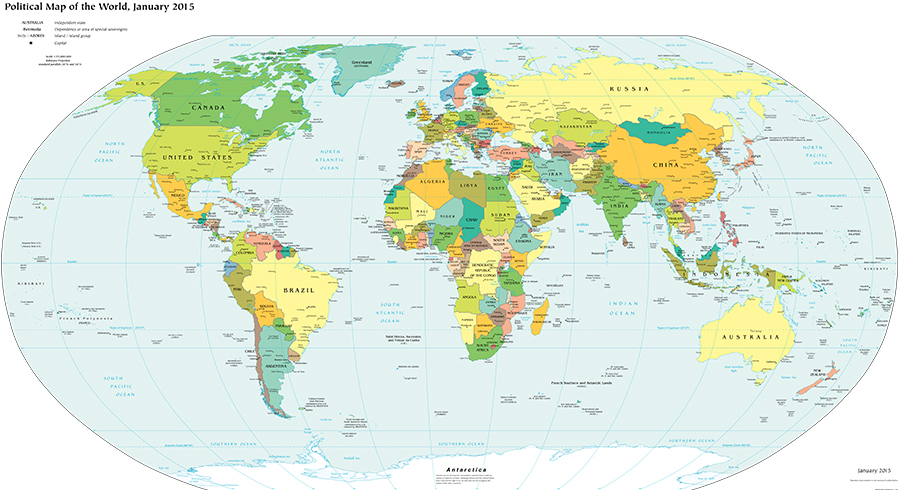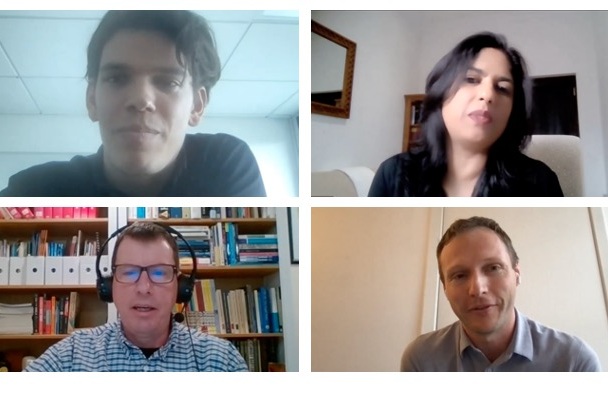
Atomic Pulse
Biosecurity Imperative: An Urgent Case for Extending the Global Health Security Agenda

In
2014, dozens of governments, international organizations and non-governmental groups
from around the world came together to accelerate global capacity to prevent,
detect, and respond to urgent infectious disease threats and to elevate health
security as a global priority. The Global Health
Security Agenda (GHSA) was conceived as a five-year initial effort that
would run through 2019 – but it’s already clear that this vital partnership
with a proven track record must be extended well into the future.
Next
week in Seoul, the Republic of Korea will convene the Steering Group of the GHSA
to discuss next steps to advance the agenda, including extending the group’s
mandate. Recognizing that the GHSA’s
work has never been more vital and would be impossible to replace, more than 100
health and health security organizations and companies operating in over 150
countries, including the Nuclear Threat Initiative (NTI), this week banded together to urge GHSA’s extension for at least another five years. Here’s
why we signed on.
As
part of our mission to address the threats from weapons of mass destruction and
disruption, NTI works to reduce biological risks posed by bioterrorism,
pandemics, and advances in technology. Over the last three years, the GHSA has
been a major driver to elevate preparedness for biological threats as a top national
security priority and health imperative for all countries. For that reason, NTI
strongly supports the continuation of the GHSA with a focus on accountability,
commitments, financing, and a continued and strengthened inclusion for biosecurity as a core
priority for both the health and security communities.
For
the past decade, global biological threats have increased in likelihood and
import – magnified by air travel, conflict, urbanization, and terrorist
interest in weapons of mass destruction. When the GHSA was launched in 2014, its
mission was to address future epidemic threats and, ultimately, to achieve a
world safe and secure from biological threats, whether caused by a naturally
occurring infectious disease outbreak, a deliberate bioterrorism attack, or an
accidental laboratory release. The GHSA has now succeeded in designing the global
architecture necessary to assess, measure, and sustain advances in global
preparedness for epidemic threats, a global architecture that would be nearly impossible
to recreate. Although not all countries choose to participate, the 59-country
GHSA serves as an incubator for innovative and new approaches to tough tasks –
a way to convene multiple sectors and communities for debate and, most
importantly, for action.
In
recent years, Ebola, the SARS, MERS, H1N1 pandemic influenza, and the anthrax
attacks have all been major international events, and although these events
exercised global response capacity, there’s no question that the world is still not prepared for a
pandemic involving a highly lethal biological threat that transmits readily
between people. Consider:
· On prevention, an
increasingly vital GHSA element: During the Ebola epidemic, the three affected
West African countries banded together, averting country collapse and the
potential creation of new safe havens for conflict and terrorism. But, secure
and consolidated sample storage and transport during and following the crisis
has continued to be a major issue considering terrorist interest in weapons of
mass destruction. Furthermore, this area will only continue to grow in need as new advances in
technology now portend the possibility of terrorist creation of new and
modified pathogens
– underscored by the recent
creation of the horsepox virus in Canada.
· On disease detection,
another integral GHSA focus area:The global leaders that launched the GHSA on
February 13, 2014 did not yet know that the first cases of Ebola had already
surfaced in Guinea. Those initial cases occurred in December 2013 but were not
reported until March, 2014 – nearly three months later. National disease
detection and reporting systems and a global biosurveillance network remain
major gaps in the global architecture for reducing biological threats.
· Finally, on
response: The initial ineffective global response to Ebola in West
Africa contributed mightily to the deaths of over 11,000 people and an epidemic
that went on to devastate West Africa, cause global fear and panic, wreak havoc
on international transportation – subsiding only after multiple deployments of
the international public health experts, investments of billions of dollars,
and the deployment of the United States military through Operation United
Assistance.
It’s clear that although
much has been done to improve capability to create global medical countermeasures
– and the launch of the Coalition for
Epidemic Preparedness Innovations is an important step forward – the world
is still many years away from a global “on demand” capacity to produce, test,
and distribute vaccines and therapeutics for emerging threats. Every
country must make prevention, detection, and response for biological
threats a top-tier priority – and GHSA will continue to be instrumental for
keeping leaders sighted.
GHSA: Successes and Areas for Continuing
and Future Focus
The GHSA
was created to resolve major, longstanding global challenges to save lives,
avoid economic loss, and avert political instability as the result of
biological threats. Through the GHSA, measurable progress is – for the first
time – being made on each of these previously intractable issues. Now is the time to accelerate our
efforts, not stop them.
1. Measurement, Accountability, and
Transparency
Before
the GHSA was launched in 2014, there was no consensus on metrics for pandemic
preparedness, and there were no globally-agreed indicators for such
measurement. At least 80% of countries had missed the 2012 deadline for
compliance with the International Health Regulations (IHR), which are the
pandemic preparedness standards that all 194 World Health Organization (WHO)
Member States have signed on to achieve. A major reason for this historic
misstep was the lack of agreed metrics for showing improvements. GHSA was created in large part to create
these measurable steps, thereby paving the way for governments, donors,
development banks, and the private sector to invest in biological threat reduction
with confidence. Within one year of its creation, the GHSA developed
11 targets with indicators. These were then
adopted by GHSA participating countries in 2015 and built into
the WHO IHR monitoring and evaluation effort the following year.
Furthermore,
in 2014, no mechanism existed for independent, external assessment of country
capacity to prevent, detect, and respond to public health emergencies of
international concern. Countries were
conducting varying self-assessments, which were not published, largely
conducted by health ministries, and without the type of multi-sectoral,
independent evaluation required to assure a realistic evaluation and a stepwise
plan for measurable improvement. Within one
year of its creation, the GHSA and its leadership developed a framework for
such evaluations and then pilot tested and published external peer evaluations
in six countries and collaborated with the WHO in the development of a
voluntary global Joint External
Evaluation (JEE)
that has now been conducted in more than 40 countries.
This
is a phenomenal track record that most global initiatives could only aspire to
attain. And we shouldn’t stop there. All countries should undergo and publish
an evaluation, and much work remains to
fill identified gaps and establish accountability for commitments and
improvements.
NTI,
in partnership with the Economist Intelligence Unit and The
Center for Health Security at the Johns Hopkins Bloomberg School of Public
Health, is developing a Global
Health Security Index
to provide a public benchmarking of global health security conditions—building
on the JEE, modelling many of the lessons learned from NTI’s successful
first-of-its-kind Nuclear Security Index, and informed by an international
expert advisory group. The GHSA should continue
promote independent monitoring and accountability, public-private partnerships
to assist countries, and commitment tracking.
2. Biosecurity as a Public Health
Imperative
Before
the GHSA was conceived, it was rare for countries to have in place a dedicated
coordination mechanism for countering biological threats that includes the
health, security, development, defense, and agriculture sectors. Even in these
countries that did have such mechanisms, the United States among them, these
communities were not using common metrics for measuring programmatic activities
with similar goals. Although global health experts in countries within East
Africa, the Middle East, and South and Southeast Asia have espoused concerns
about bioterrorism, many health experts – often from developed countries – have
remained wary about including biosecurity as a core component of public health.
The IHR itself didn’t even contain specific metrics related to biosecurity. Shortly
after its inception, the GHSA set to work and, in short order, developed
initial biosecurity
metrics
and activities that the health
and security communities from participating countries could each agree upon,
including metrics urging consolidation of especially dangerous pathogens and
maximizing the use of effective modern diagnostic technologies that don’t
require culturing and improve disease detection and surveillance. However, in
this area of the GHSA, much remains to be done to regularly bring security
experts to the GHSA table, to build additional bridges between the GHSA and
other initiatives with a core competency in biosecurity, such as the Global Partnership
Against the Spread of Weapons and Materials of Mass Destruction, and the United Nations Security Council Resolution 1540
Committee.
The GHSA could and should help inform and create
consensus on global biosecurity norms that reduce the risk posed by emerging
technologies that are increasingly accessible and portend terrorist capability
to create and modify dangerous pathogens. As the GHSA extends, this area
requires more attention, as do other vital areas like One Health, and the
creation of more accessible tools and technologies for real-time
biosurveillance.
Additional work is needed to catalyze more
attention to this vital area of the Agenda.
The GHSA should place additional emphasis on inclusion of security
experts with an enhanced focus on biosecurity. The GHSA must also consider the
urgent need to develop global norms and incentives for reducing risks posed by
advances in technology that now enable the creation and modification of pathogens
with pandemic potential.
3. Financing and Sustained Attention by
Leaders – No More Cycles of “Panic” and “Neglect”
Finally,
when GHSA was launched there were not – and still are not – global mechanisms
for leveraging financing from host countries, donors, development banks, and
private sector companies to fill specific health security gaps. Historically,
global leaders pay attention to (and finance) biological threats during an
ongoing outbreak. However, attention tends to wane when a major crisis is not
at hand. During the
2014-2016 Ebola epidemic, the U.S. Government allocated $1 billion to assist 17
countries to achieve the GHSA targets. The International
Working Group (IWG) on Pandemic Preparedness Financing recently called on
all countries to be assessed and to develop plans to finance identified
gaps.
The GHSA is a country-driven effort, and
the call to action within the IWG report should be heeded. The GHSA should
catalyze the development of a mechanism to kick start financing for low-income
countries, including sustainable host country financing strategies, plug-ins
for private sector support, and synergy with development bank assistance.
These
goals must remain at the forefront of the global agenda, and the GHSA has
proven itself as a crucial mechanism for incubating creative approaches to take
next steps. Quite simply, the world cannot afford to lose this vital and
effective global partnership.
Stay Informed
Sign up for our newsletter to get the latest on nuclear and biological threats.
More on Atomic Pulse

Get to Know NTI: Aparupa Sengupta
Aparupa Sengupta, senior program officer for NTI’s Global Biological Policy and Programs team (NTI | bio), sat down with NTI’s Mary Fulham for the latest in Atomic Pulse’s “Get to Know NTI” series.

2022 Next Gen for Biosecurity Competition Challenge: Developing New Verification Strategies for the Biological Weapons Convention
Today, leaders preparing for the BWC’s Ninth Review Conference in August are exploring whether the global community can leverage increased attention and political will to strengthen the BWC by building mechanisms that increase transparency and trust with the goal of reducing the risk of global catastrophic biological events. A particular aim is determining whether there are effective and politically viable ways to enforce the treaty.

NTI at 20: Hayley Severance on the Next Pandemic, Cross-Border Collaboration on Biosecurity, and Engaging Young Leaders
An epidemiologist focused on preventing catastrophic biological events and building health security capacity around the world, Hayley Anne Severance brought her expertise to NTI’s expanding biosecurity team in 2018.
